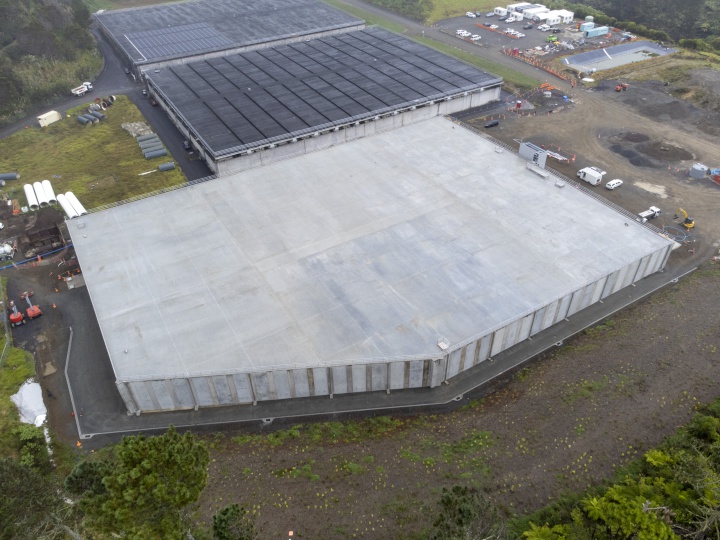Auckland Boosts Water Storage Capacity By 45 Million Litres
Today the equivalent of 18 Olympic-sized swimming pools is being added to Auckland’s treated water storage capacity as a $60 million new reservoir goes into service.

The 45-million-litre reservoir is the third at Watercare’s Redoubt Road Reservoir Complex, the city’s largest reservoir complex, in Totara Park.
The Redoubt Road Complex receives water from Ardmore and Waikato water treatment plants.
Eighty per cent of Auckland’s treated water supply passes through the Redoubt Road Complex each day.
It takes the site’s overall storage capacity to 165 million litres – and increases the city’s overall treated water storage capacity to more than 700 million litres.
Watercare chief infrastructure officer Steve Webster says the reservoir will majorly support Auckland’s population growth.
“Over the next two decades, Auckland’s population is expected to grow by 29 per cent, taking the city’s current population of 1.7 million to more than two million people.”
Webster says the third reservoir will give Watercare greater flexibility in operating the site and more security over Auckland’s water supply.
“The reservoir provides us with an increased volume of water storage that we can draw on to maintain water supply for our customers in the event of an unplanned event such as a major power outage or natural disaster.
“The site can hold up to eight reservoirs, so as the city grows, we have the space available to build further reservoirs at the site.”
The construction of the third Redoubt Rd reservoir was completed in two stages over a 30-month period commencing in late 2021.
Earthworks for the site access road began in October 2021, and the construction of the reservoir —which required just over 8,000m3 of concrete involved four large overnight concrete pours for the floor and six for the roof —started in mid 2022.
Watercare project manager Martin Hughes says before giving the reservoir the green light, it underwent a number of checks and balances, including water tightness testing.
“Water tightness testing is a standard procedure used globally to confirm that water retaining structures are fit for purpose before they are brought into service. “
“It’s one of the last tests we do before commissioning, as it requires us to fill the reservoir over four to five days until it reaches its maximum operating level.
“Once it reached this level, our team visually monitored the reservoir walls for leaks and measured the internal water level daily over a seven-day period.”
Completion of the overall project is only a few weeks away now, with construction of the new permanent site roads, fencing and final landscaping underway.


 Hugh Grant: Zero Trust Security - A Buzzword Or The Ultimate Protection?
Hugh Grant: Zero Trust Security - A Buzzword Or The Ultimate Protection? Bill Bennett: Comcom revisits fibre rules as competition intensifies
Bill Bennett: Comcom revisits fibre rules as competition intensifies Bill Bennett: Download Weekly Extra - InternetNZ disrupted
Bill Bennett: Download Weekly Extra - InternetNZ disrupted Community Housing Aotearoa: Reducing Debt Financing Barriers For Community Housing Providers
Community Housing Aotearoa: Reducing Debt Financing Barriers For Community Housing Providers Bill Bennett: Apple iPad Air M3 - best tablet for creators in 2025
Bill Bennett: Apple iPad Air M3 - best tablet for creators in 2025 Venture Taranaki: Taranaki Economic Outlook - Challenges Remain, But Signs Of Recovery Ahead
Venture Taranaki: Taranaki Economic Outlook - Challenges Remain, But Signs Of Recovery Ahead



